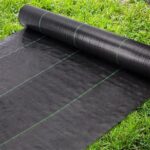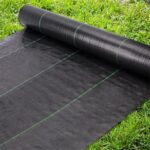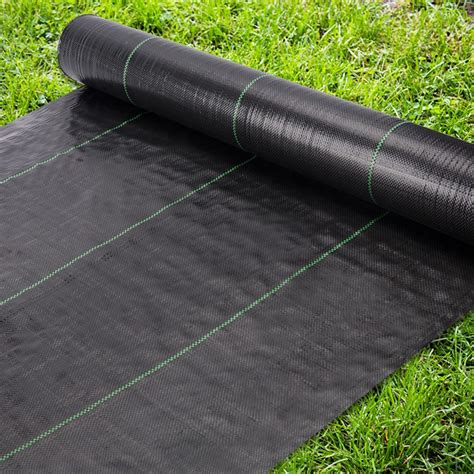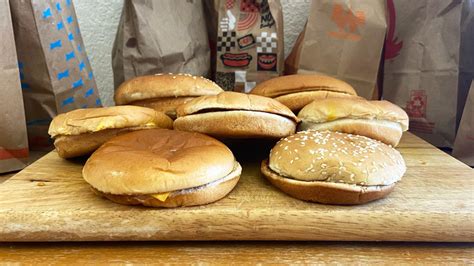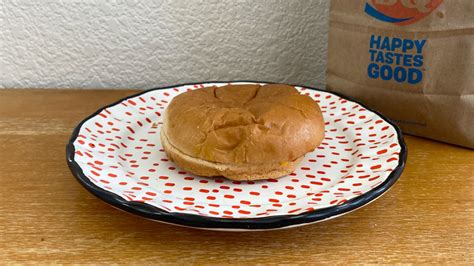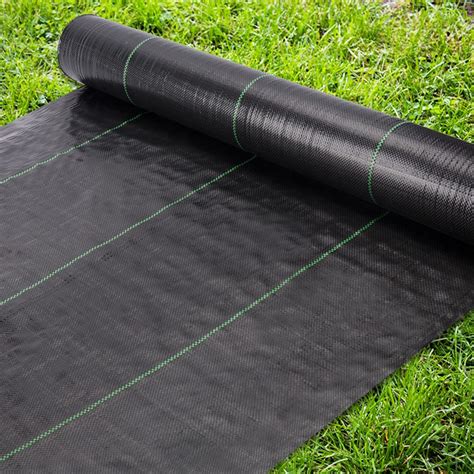
Switching from landscape fabric to more sustainable alternatives can significantly improve garden health and reduce environmental impact, experts say. Commonly used for weed control, landscape fabric often creates more problems than it solves by hindering soil health and plant growth.
Gardeners seeking eco-friendly weed control should consider alternatives like mulch, cover crops, and strategic planting techniques. Landscape fabric, while initially appearing as a simple solution for weed suppression, compacts soil, restricts water and nutrient flow, and ultimately degrades into a mess of plastic fibers.
“Landscape fabric is one of those things that people think is going to be a great solution, but it ends up causing more problems than it solves,” says Melinda Myers, a nationally known gardening expert and author.
The Problem with Landscape Fabric
Landscape fabric, typically made from woven or non-woven materials like polypropylene or burlap, is designed to block sunlight from reaching weeds, thereby preventing their growth. However, its drawbacks often outweigh its perceived benefits.
One of the primary issues is soil compaction. Over time, the fabric prevents the natural mixing of organic matter into the soil, leading to a dense, less porous structure. This compaction inhibits root growth, reduces water infiltration, and decreases the overall health of the soil ecosystem.
According to experts, the fabric’s presence disrupts the natural processes that contribute to fertile soil. Earthworms, beneficial microbes, and other soil organisms struggle to thrive in compacted conditions. This lack of biological activity further degrades the soil’s structure and nutrient availability.
Water and nutrient flow are also significantly restricted by landscape fabric. While some fabrics are designed to allow water to pass through, they often become clogged with soil particles over time, reducing their permeability. This can lead to water pooling on the surface or uneven distribution of moisture in the soil.
Similarly, the fabric can impede the movement of essential nutrients from the soil to plant roots. Fertilizers applied to the surface may not effectively reach the root zone, depriving plants of the nourishment they need for healthy growth. This can result in stunted growth, nutrient deficiencies, and increased susceptibility to pests and diseases.
Furthermore, landscape fabric is not a permanent solution. Over time, it degrades and breaks down, particularly when exposed to sunlight and weather. This degradation results in small plastic fibers contaminating the soil. These fibers can persist for years, posing a threat to soil health and potentially entering the food chain.
Weeds, too, often find ways to grow on top of or through the fabric. As soil and organic matter accumulate on the surface, weeds can establish themselves in this new layer of growing medium. Removing these weeds can be difficult, as their roots often become entangled in the fabric, making extraction challenging and potentially damaging the fabric further.
Eco-Friendly Alternatives
Fortunately, several eco-friendly alternatives offer effective weed control without the harmful side effects of landscape fabric. These alternatives focus on improving soil health, promoting beneficial organisms, and creating a natural barrier against weeds.
-
Mulch: Mulch is one of the most effective and widely used alternatives to landscape fabric. Organic mulches, such as wood chips, shredded bark, straw, and compost, provide a physical barrier that blocks sunlight from reaching weed seeds. As the mulch decomposes, it enriches the soil with organic matter, improving its structure, water retention, and nutrient content.
“Mulch is a great alternative to landscape fabric,” says Myers. “It smothers weeds, helps retain moisture, and improves the soil as it breaks down.”
The type of mulch used can vary depending on the plants and the aesthetic preferences of the gardener. Wood chips and bark are suitable for pathways and shrub beds, while straw and compost are excellent choices for vegetable gardens and flower beds.
To effectively suppress weeds, mulch should be applied in a layer of at least 2-4 inches thick. Regularly replenishing the mulch as it decomposes ensures continuous weed control and soil enrichment.
-
Cover Crops: Cover crops are plants grown specifically to improve soil health and suppress weeds. They are typically planted in the fall or early spring and then either tilled into the soil or left to decompose on the surface.
Cover crops help to prevent soil erosion, increase organic matter, and improve soil structure. They also compete with weeds for resources like sunlight, water, and nutrients, reducing weed populations.
Examples of common cover crops include clover, rye, oats, and buckwheat. The choice of cover crop depends on the specific needs of the soil and the climate.
-
Strategic Planting: Strategic planting involves using plant density and spacing to create a natural barrier against weeds. By planting ground cover plants closely together, gardeners can create a living mulch that shades the soil and prevents weed seeds from germinating.
Ground cover plants also help to improve soil health by adding organic matter and promoting beneficial soil organisms. They can also enhance the aesthetic appeal of the garden by adding texture, color, and visual interest.
Examples of ground cover plants include creeping thyme, sedum, and pachysandra. The choice of ground cover plant depends on the specific growing conditions and the desired aesthetic effect.
-
Cardboard and Newspaper: Cardboard and newspaper can be used as a biodegradable weed barrier. These materials are placed directly on the soil surface and then covered with mulch.
The cardboard or newspaper blocks sunlight from reaching weed seeds, preventing their germination. As the materials decompose, they add organic matter to the soil, improving its structure and fertility.
When using cardboard, it is important to remove any tape or labels, as these can contain harmful chemicals. Newspaper should be used in several layers to provide an effective barrier.
-
Vinegar: Horticultural vinegar, which has a higher acetic acid concentration than household vinegar, can be used as a natural herbicide. It works by dehydrating plant tissues, causing them to wither and die.
Vinegar is most effective on young weeds and should be applied directly to the foliage. It is important to avoid spraying vinegar on desirable plants, as it can also damage them.
Vinegar is a non-selective herbicide, meaning it will kill any plant it comes into contact with. Therefore, it should be used with caution and only in areas where weed control is specifically needed.
-
Hand Weeding: While it may seem labor-intensive, hand weeding is an effective way to control weeds, especially in small gardens. Regularly removing weeds before they have a chance to set seed can significantly reduce weed populations over time.
Hand weeding also allows gardeners to identify and address other potential problems in the garden, such as pests and diseases. It can be a meditative and rewarding activity, providing a connection to nature and a sense of accomplishment.
-
Flame Weeding: Flame weeding involves using a propane torch to quickly heat weeds, causing their cells to rupture and die. It is most effective on young weeds and can be used in a variety of settings, including vegetable gardens, flower beds, and pathways.
Flame weeding is a non-chemical method of weed control that can be used as an alternative to herbicides. It is important to use caution when flame weeding, as it can pose a fire hazard. Always follow the manufacturer’s instructions and take precautions to prevent fires.
Making the Switch
Switching from landscape fabric to eco-friendly alternatives requires some initial effort, but the long-term benefits are well worth it. By improving soil health, promoting beneficial organisms, and creating a natural barrier against weeds, gardeners can create a thriving and sustainable landscape.
The first step is to remove any existing landscape fabric. This can be a challenging task, as the fabric is often entangled with plant roots and soil. Using a sharp knife or garden fork can help to loosen the fabric and make it easier to remove.
Once the fabric is removed, it is important to amend the soil to improve its structure and fertility. Adding compost, well-rotted manure, or other organic matter can help to loosen compacted soil, improve drainage, and increase nutrient availability.
Next, choose the appropriate eco-friendly weed control method based on the specific needs of the garden. Mulch is a good option for general weed control, while cover crops can be used to improve soil health in larger areas. Strategic planting can be used to create a natural barrier against weeds in flower beds and borders.
Finally, be patient and persistent. It may take some time for the eco-friendly alternatives to fully suppress weeds. Regularly monitoring the garden and addressing any weed problems as they arise will help to ensure the success of the new weed control strategy.
Benefits of Eco-Friendly Weed Control
Switching to eco-friendly weed control offers a multitude of benefits for both the gardener and the environment.
-
Improved Soil Health: Eco-friendly methods like mulching and cover cropping improve soil structure, water retention, and nutrient availability. This leads to healthier plants, increased yields, and reduced reliance on fertilizers.
-
Reduced Environmental Impact: By avoiding the use of landscape fabric and synthetic herbicides, gardeners can reduce their impact on the environment. Landscape fabric contributes to plastic pollution, while herbicides can harm beneficial organisms and contaminate water sources.
-
Enhanced Biodiversity: Eco-friendly methods promote biodiversity by creating a more favorable habitat for beneficial insects, birds, and other wildlife. This can help to control pests naturally and create a more balanced ecosystem.
-
Reduced Maintenance: While some initial effort may be required to switch to eco-friendly methods, they often result in reduced maintenance over the long term. Healthy soil and vigorous plants are more resistant to pests and diseases, reducing the need for interventions.
-
Aesthetically Pleasing Landscapes: Eco-friendly methods can enhance the aesthetic appeal of the garden. Mulch provides a natural and attractive ground cover, while ground cover plants add texture, color, and visual interest.
By embracing eco-friendly weed control, gardeners can create a thriving and sustainable landscape that benefits both the environment and their own well-being.
Expert Opinions
Many gardening experts advocate for the use of eco-friendly weed control methods over landscape fabric. They emphasize the importance of soil health and the long-term benefits of sustainable practices.
“Healthy soil is the foundation of a healthy garden,” says Myers. “By focusing on improving soil health, gardeners can create a more resilient and productive landscape that requires less maintenance and is less susceptible to pests and diseases.”
Other experts agree that landscape fabric is often a short-sighted solution that can create more problems than it solves. They recommend that gardeners consider the long-term consequences of their weed control choices and opt for methods that are both effective and environmentally responsible.
Conclusion
Ditching landscape fabric in favor of eco-friendly alternatives is a significant step towards creating a healthier, more sustainable garden. By understanding the drawbacks of landscape fabric and embracing methods that prioritize soil health and natural weed suppression, gardeners can cultivate thriving landscapes that benefit both themselves and the environment. The shift requires a change in perspective, focusing on long-term soil improvement rather than quick fixes. The rewards, however, are well worth the effort: a vibrant, resilient garden that contributes to a healthier planet.
Frequently Asked Questions (FAQ)
Q1: What is landscape fabric and why is it commonly used?
A1: Landscape fabric is a material, typically made of woven or non-woven synthetic fibers (like polypropylene), designed to suppress weeds in gardens and landscapes. It is commonly used because it provides an initial, seemingly easy solution to weed control by blocking sunlight from reaching weed seeds. It is often perceived as a low-maintenance option for keeping gardens tidy and weed-free.
Q2: What are the main problems associated with using landscape fabric in gardens?
A2: The main problems include:
- Soil Compaction: Landscape fabric prevents organic matter from mixing into the soil, leading to compaction and reduced porosity.
- Restricted Water and Nutrient Flow: The fabric can become clogged over time, hindering water and nutrient movement to plant roots.
- Degradation and Plastic Contamination: Landscape fabric degrades when exposed to sunlight and weather, releasing plastic fibers into the soil.
- Weed Growth on Top: Soil and organic matter accumulate on top of the fabric, creating a medium for weeds to grow, making removal difficult as roots entangle in the fabric.
- Hindered Root Growth: The fabric can restrict the growth of plant roots, limiting their ability to access nutrients and water.
- Disruption of Soil Ecosystem: It inhibits the activity of beneficial soil organisms like earthworms.
Q3: What are some effective and eco-friendly alternatives to landscape fabric for weed control?
A3: Effective alternatives include:
- Mulch: Organic mulches like wood chips, shredded bark, straw, and compost suppress weeds by blocking sunlight and enriching the soil as they decompose.
- Cover Crops: Plants like clover, rye, and oats improve soil health, prevent erosion, and compete with weeds for resources.
- Strategic Planting: Using dense planting of ground cover plants to create a living mulch that shades the soil.
- Cardboard and Newspaper: Biodegradable weed barriers that decompose and add organic matter to the soil.
- Horticultural Vinegar: A natural herbicide that dehydrates plant tissues, causing weeds to die. (Use with caution, avoid desirable plants).
- Hand Weeding: Regular manual removal of weeds before they set seed.
- Flame Weeding: Using a propane torch to quickly heat weeds, causing their cells to rupture. (Use caution to prevent fires).
Q4: How does using mulch as a weed control method benefit the soil and plants?
A4: Mulch benefits the soil and plants in several ways:
- Weed Suppression: Blocks sunlight, preventing weed seed germination.
- Moisture Retention: Reduces water evaporation from the soil surface, keeping roots hydrated.
- Soil Enrichment: Decomposing organic mulches add nutrients to the soil, improving its fertility.
- Temperature Regulation: Insulates the soil, protecting plant roots from extreme temperatures.
- Erosion Control: Prevents soil erosion by reducing the impact of rainfall and wind.
- Improved Soil Structure: Organic matter improves soil structure, aeration, and drainage.
Q5: What steps should I take to remove existing landscape fabric and transition to a more eco-friendly weed control method?
A5: To remove landscape fabric and transition:
- Remove the Fabric: Carefully lift and remove the landscape fabric, using a sharp knife or garden fork to loosen it from plant roots and soil. This may be labor-intensive.
- Amend the Soil: Add compost, well-rotted manure, or other organic matter to improve soil structure, drainage, and nutrient content. Work it into the soil to a depth of several inches.
- Choose an Alternative: Select an eco-friendly weed control method that suits your garden’s needs (e.g., mulch, cover crops, strategic planting).
- Apply the Alternative: Apply the chosen method according to best practices (e.g., a 2-4 inch layer of mulch).
- Monitor and Maintain: Regularly check the garden for weeds and address them promptly. Replenish mulch as needed and adjust strategies based on observed effectiveness.
Expanded Analysis and Context
The trend away from landscape fabric represents a growing awareness of sustainable gardening practices. For years, homeowners and even some professional landscapers relied on landscape fabric as a quick fix for weed problems. Its appeal lay in the promise of reduced maintenance and a tidy, weed-free appearance. However, as understanding of soil science and ecological principles has deepened, the drawbacks of landscape fabric have become increasingly apparent.
The primary issue centers around the vital role of healthy soil in a thriving ecosystem. Soil is not merely a substrate for plants to grow in; it’s a complex living environment teeming with microorganisms, insects, and other organisms that contribute to nutrient cycling, water retention, and overall plant health. Landscape fabric disrupts this delicate balance.
The compaction caused by landscape fabric has far-reaching consequences. Compacted soil restricts root growth, limiting the plant’s ability to absorb water and nutrients. This can lead to stunted growth, nutrient deficiencies, and increased susceptibility to diseases and pests. Moreover, compacted soil reduces water infiltration, increasing the risk of runoff and erosion.
The restriction of water and nutrient flow is another significant concern. While some landscape fabrics claim to be water-permeable, they often become clogged with fine soil particles over time, reducing their effectiveness. This can result in uneven watering, with some areas of the garden becoming waterlogged while others remain dry.
The degradation of landscape fabric and the resulting plastic contamination pose a serious environmental threat. As the fabric breaks down, it releases small plastic fibers into the soil. These fibers can persist for years, potentially affecting soil health and entering the food chain. Microplastic contamination is a growing global concern, and the use of landscape fabric contributes to this problem.
The fact that weeds can still grow on top of landscape fabric is particularly frustrating for gardeners. As soil and organic matter accumulate on the surface, weeds can establish themselves in this new layer of growing medium. Removing these weeds is often difficult, as their roots become entangled in the fabric. This can damage the fabric and exacerbate the problem.
The shift towards eco-friendly alternatives represents a more holistic approach to gardening. These alternatives focus on improving soil health, promoting biodiversity, and creating a natural barrier against weeds. They are often more sustainable and environmentally responsible than landscape fabric.
Mulch, for example, not only suppresses weeds but also enriches the soil with organic matter, improves water retention, and regulates soil temperature. Cover crops prevent erosion, increase organic matter, and compete with weeds for resources. Strategic planting creates a living mulch that shades the soil and prevents weed seeds from germinating.
The use of cardboard and newspaper as a weed barrier is another eco-friendly option. These materials decompose and add organic matter to the soil, improving its structure and fertility. Horticultural vinegar is a natural herbicide that can be used to control young weeds.
Hand weeding, while labor-intensive, is an effective way to control weeds, especially in small gardens. It allows gardeners to identify and address other potential problems in the garden, such as pests and diseases. Flame weeding is a non-chemical method of weed control that can be used as an alternative to herbicides.
Making the switch from landscape fabric to eco-friendly alternatives requires a shift in mindset. It involves focusing on long-term soil health and sustainable practices rather than quick fixes. It also requires a willingness to experiment and adapt to changing conditions.
The benefits of eco-friendly weed control are numerous. Improved soil health leads to healthier plants, increased yields, and reduced reliance on fertilizers. Reduced environmental impact minimizes pollution and protects beneficial organisms. Enhanced biodiversity creates a more balanced and resilient ecosystem. Reduced maintenance saves time and effort in the long run. Aesthetically pleasing landscapes enhance the beauty and enjoyment of the garden.
The growing awareness of the drawbacks of landscape fabric and the benefits of eco-friendly alternatives is driving a significant change in the gardening industry. More and more gardeners are embracing sustainable practices and creating thriving landscapes that benefit both themselves and the environment. This trend is likely to continue as more information becomes available and as concerns about environmental sustainability grow. The move away from landscape fabric is not just a gardening trend; it reflects a broader shift towards a more environmentally conscious and sustainable way of life. It represents a deeper understanding of the interconnectedness of soil, plants, and the environment, and a commitment to creating healthier and more resilient ecosystems.
